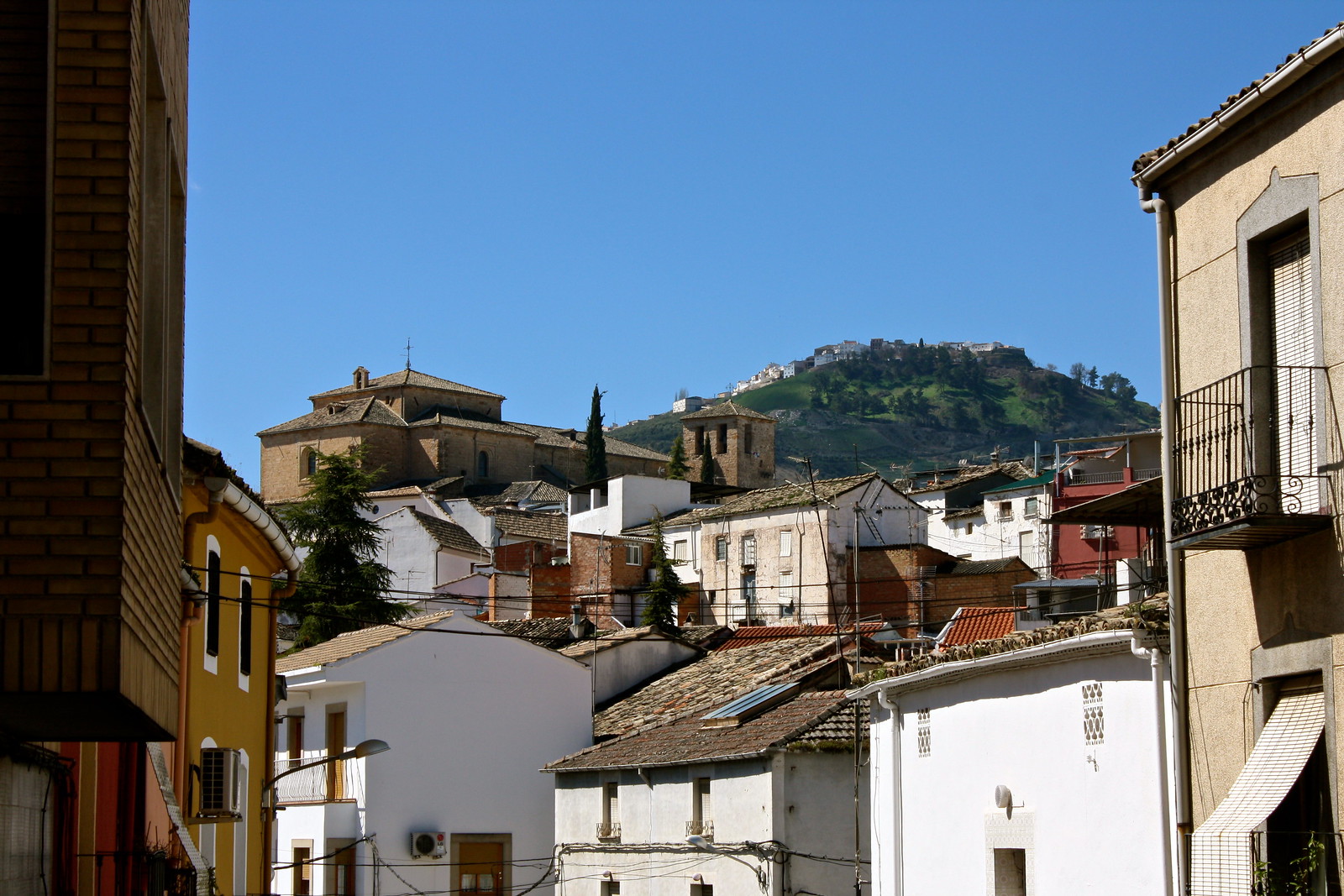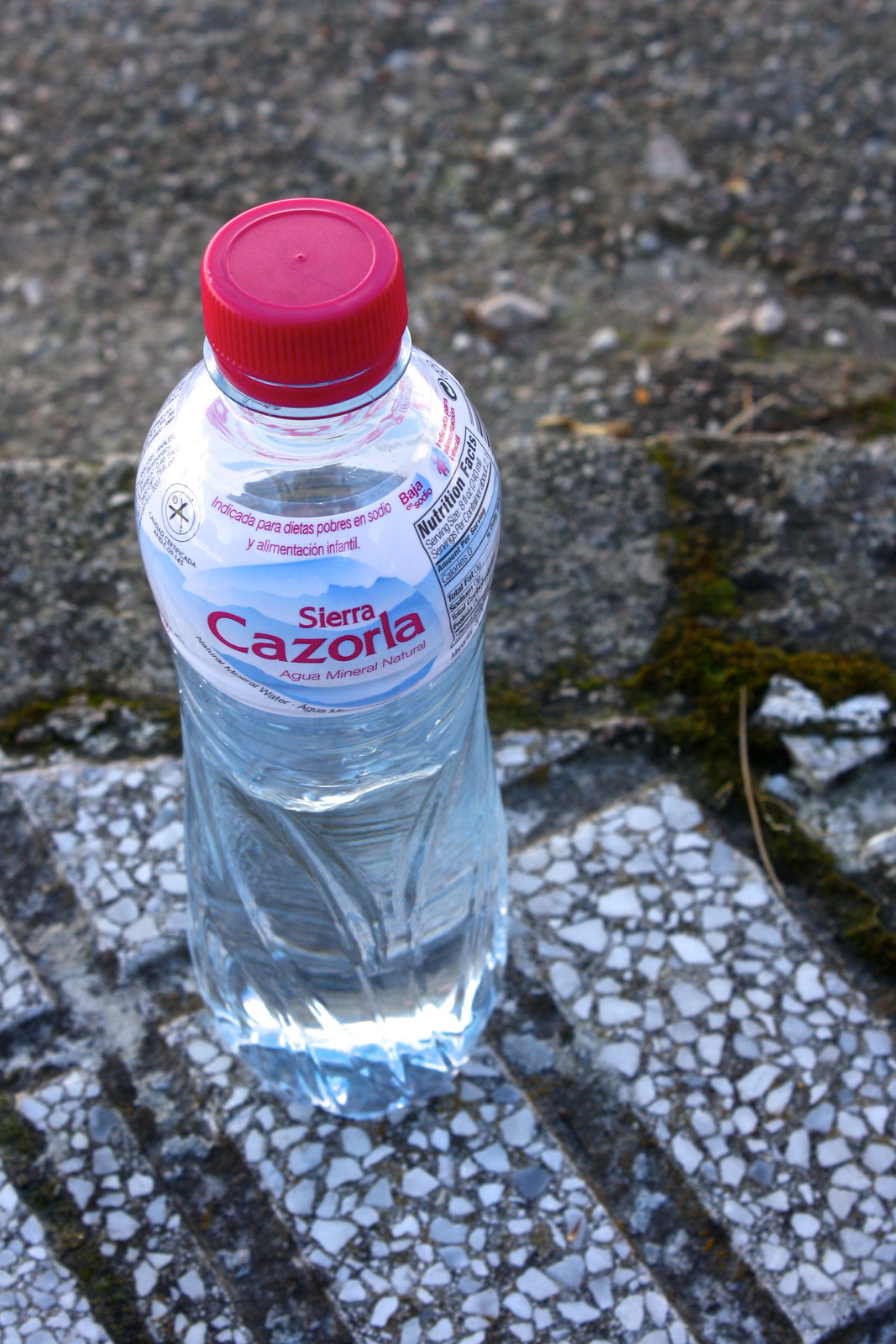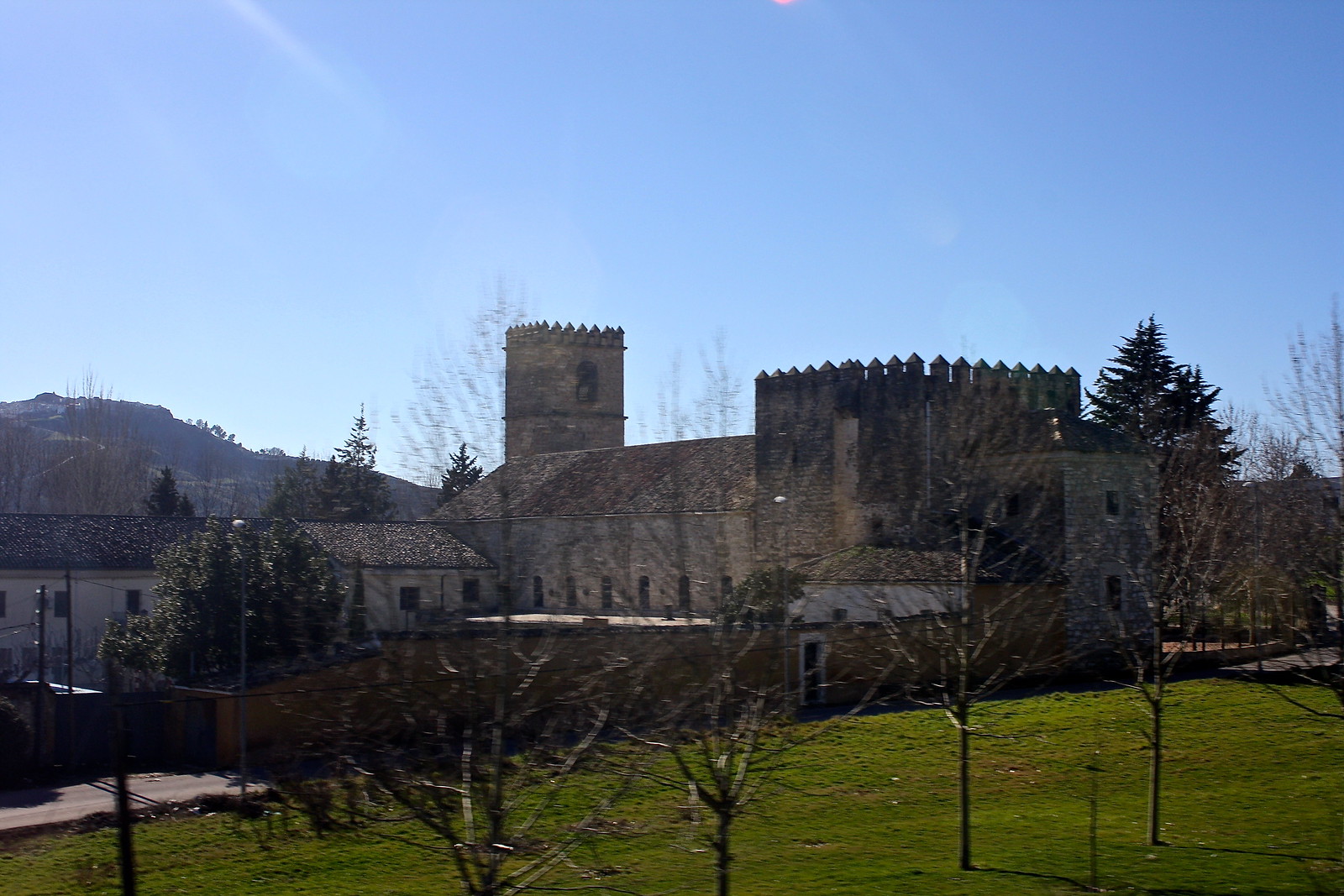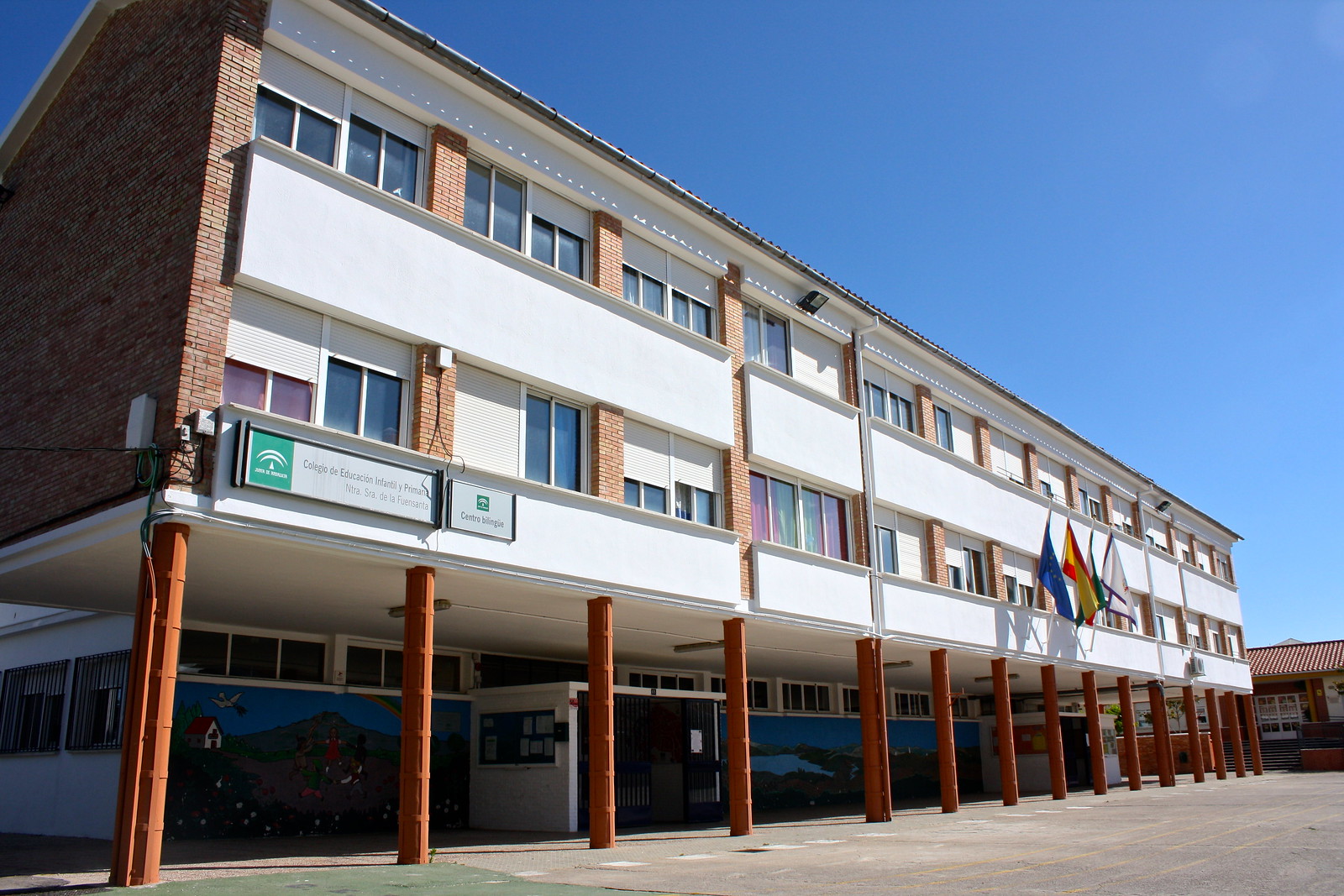Villanueva del Arzobispo: The Town Where I Worked in Spain
Well, it’s been almost a year since I moved to Spain and worked for eight months as a language assistant, yet I still have not written (almost) anything about the town where I worked, the town responsible for me being abroad in the first place! So in this post, I would like to share a little bit about Villanueva del Arzobispo, a village of a little under 9,000 people in the middle of Spanish olive oil country.
Like I said above, Villanueva del Arzobispo (that nine-syllable mouthful referred to hereafter as simply “Villanueva”) is located in the heart of Spain’s olive oil country. Pronounced “bee-yah-NWAY-vah dayl ahr-thoe-VEES-poe” [ˌbi.ʝaˈnwe.βa ðel ˌaɾ.θoˈβis.po], the city belongs to the province of Jaén, which alone produces a third of Spain’s annual olive oil total. Because of this, virtually all non-urban, non-mountainous land is devoted to endless olive groves that carpet the landscape in a muted, warm green.
The city is found on a plain to the west of some lovely mountain ranges (like the Sierra de Las Villas) and sits on a plateau between the Guadalimar and Guadalquivir rivers, the latter of which flows through Córdoba and Sevilla further west. Jaén is the fifth-most populous province in the Andalucía region, behind Sevilla, Málaga, Cádiz, Granada, and Córdoba, and most people live either in the big capital, Jaén, or in villages of varying size along the Guadalquivir river valley—like Villanueva.
In Spain, the word pueblo means “village” but it also has connotations of “ancestral hometown.” Over the past few decades, the majority of the Spanish population has gone to the big cities for work, but they still go back to their home village in the summer months to see their family and old friends and to deal with any property they may have. This means folks living in Madrid, Barcelona, or Bilbao may not actually say they are from those cities, but rather from the small town they or their parents emigrated from.
These pueblos are, of course, small and chill, but will have all the amenities you need in life: little corner grocery stores with produce, canned goods, meat, and bread; individual shops specializing in bedding, in shoes, or in office supplies; plenty of bar-restaurant-cafés in which to spend time with friends and family; a nice plaza or two to go for a paseo or afternoon stroll in; a bus station so you can get to the next town over; and schools, churches, and a bullring.
Villanueva is no different, and you can walk from one edge of town to the other in about 20 minutes. It really is a charming place, but even though I was placed to teach English at the elementary school in town, after I got stuck in town for a weekend at the beginning of the year, I knew I couldn’t last eight months there. So I opted to live down the road in Úbeda, a city about four times the size with more apartments to choose from, a couple big supermarkets, a handful of fellow Americans, and a bus station that serves as a regional transportation hub.
To be honest, there really aren’t that many “sights” to see in town, but if the regional tourism board can manage to put together an eight-page brochure about Villanueva, then I think I might be able to highlight the interesting places in town.
On the south edge of town, you’ve got the local bullring, built in 1928 in the Mudéjar Revival style, so it’s got cool horseshoe arches and stair-step triangles all over the place. The gold, white, and stone color scheme is really sharp.
In the central, historic core is the monumental, 17th-century Church of San Andrés. The town’s main church, it was constructed over an earlier one that had sat on the foundations of an old Moorish fortress; from certain angles the bell towers and corners look much more like a castle than a place of worship. Heading south down Calle Cantarerías you can get a well-composed photo like the one at the top of this post, with the church dominating the city and the hilltop village of Iznatoraf looming in the distance.
Just down the street is the local Dominican convent dedicated to Santa Ana. This simple, Renaissance complex dates from 1540 and has a distinctive, two-tiered bell tower that can be recognized from afar.
Finally, in the southeast corner of Villanueva you can find the Sanctuary of the Fuensanta. A Romanesque fort-like church, this space houses the statue of the town’s patron saint, the Virgin of the Fuensanta. You can read more about the unusual legend behind the fuensanta or “holy fountain” in my first blog post about the town here.
Originally, Villanueva was called La Moraleja, but in the year 1396 the archbishop of Toledo (who had significant temporal powers in southern Spain) granted the village the title of “villa” or town. The “del Arzobispo” (“of the archbishop”) was added on to distinguish it from the other Villanuevas in Jaén province and Spain at large. There’s a joke that goes that Villanueva is a city of three lies or falsehoods (ciudad de las tres mentiras), as it’s neither a villa (a special town with fancy privileges), nor nueva (“new”), nor does it have an archbishop.
For the 2012–2013 school year, I worked at CEIP Nuestra Señora de la Fuensanta—“CEIP” stands for “Colegio de Educación Infantil y Primaria” (“Preschool and Elementary School”) and “Nuestra Señora de la Fuensanta” refers to the town’s patron saint, Our Lady of the Fuensanta. Little kiddos of three to five years of age go to the preschool building (infantil) and everyone else, ranging from first through sixth grade, attended classes in the main primaria edifice. There was also a dormitory for students from the countryside to stay at during the week as well as three or four basketball/soccer courts for recess and P.E.
I’ve already written about my experience teaching at the school twice, so check out those blog posts for more details about the nitty-gritty details of daily life. But I think it’s safe to say that I had a great time working at La Fuensanta, as all the teachers were always friendly and welcoming and wanted to incorporate me into their lessons. Whether the actual “bilingual” teaching actually helped is another story, but at the very least the kids enjoyed class whenever I showed up—the first graders would literally tackle me with hugs and shouts of “TRÉBOOOOOL” when I opened the door—so I hope they found learning English as something fun and not just another subject.
Something that I found really cool about the school was its racial diversity. In addition to light-skinned, ethnic European Spaniards, Villanueva has a fair number of Romani people (i.e., Gypsies) as well as recent Moroccan immigrants.
For those who aren’t aware (I certainly wasn’t when I first arrived), Gypsies (gitanos) are people who are just as Spanish as “white” Spaniards but are the descendants of people from northern India who came to the Iberian peninsula about five or six centuries ago. Although generally lower-income, they have access to the same social services and, importantly, education as everyone else. Sadly, lots of people I lived and worked with often made racial jokes about them. Nevertheless, Gypsy students made up about 5–10% of the kids at school.
Villanueva is also home to many Moroccans who have come to Spain over the past two decades for work, for example, in the olive groves. Their children made up a good fourth or fifth of the classes I taught in. They never caused big problems and spoke Spanish just as well as the other students—and had already picked up on the laid-back accent, too! I’m kind of jealous of them because they will grow up trilingual in Arabic, Spanish, and (probably) English. It was really fun to go to Morocco over Easter break and get a feel for these students’ home culture—and come back being able to say as-salaam ‘alaykum (“hello”) to them!
While I am looking forward to moving across the country to northwestern Galicia, I will really miss this school next year. I was blessed with a great experience here and am grateful for the wonderful introduction to Spanish society I had at La Fuensanta.
If you’ve ever lived or worked in Spain, what was your pueblo like? Talk about it in the comments below!

 |
| Church of San Andrés |
The surrounding region
 |
| Villanueva seen from above |
Like I said above, Villanueva del Arzobispo (that nine-syllable mouthful referred to hereafter as simply “Villanueva”) is located in the heart of Spain’s olive oil country. Pronounced “bee-yah-NWAY-vah dayl ahr-thoe-VEES-poe” [ˌbi.ʝaˈnwe.βa ðel ˌaɾ.θoˈβis.po], the city belongs to the province of Jaén, which alone produces a third of Spain’s annual olive oil total. Because of this, virtually all non-urban, non-mountainous land is devoted to endless olive groves that carpet the landscape in a muted, warm green.
The city is found on a plain to the west of some lovely mountain ranges (like the Sierra de Las Villas) and sits on a plateau between the Guadalimar and Guadalquivir rivers, the latter of which flows through Córdoba and Sevilla further west. Jaén is the fifth-most populous province in the Andalucía region, behind Sevilla, Málaga, Cádiz, Granada, and Córdoba, and most people live either in the big capital, Jaén, or in villages of varying size along the Guadalquivir river valley—like Villanueva.
Villanueva as a pueblo
 |
| Streets of Villanueva |
In Spain, the word pueblo means “village” but it also has connotations of “ancestral hometown.” Over the past few decades, the majority of the Spanish population has gone to the big cities for work, but they still go back to their home village in the summer months to see their family and old friends and to deal with any property they may have. This means folks living in Madrid, Barcelona, or Bilbao may not actually say they are from those cities, but rather from the small town they or their parents emigrated from.
 |
| Local bottled water |
These pueblos are, of course, small and chill, but will have all the amenities you need in life: little corner grocery stores with produce, canned goods, meat, and bread; individual shops specializing in bedding, in shoes, or in office supplies; plenty of bar-restaurant-cafés in which to spend time with friends and family; a nice plaza or two to go for a paseo or afternoon stroll in; a bus station so you can get to the next town over; and schools, churches, and a bullring.
Villanueva is no different, and you can walk from one edge of town to the other in about 20 minutes. It really is a charming place, but even though I was placed to teach English at the elementary school in town, after I got stuck in town for a weekend at the beginning of the year, I knew I couldn’t last eight months there. So I opted to live down the road in Úbeda, a city about four times the size with more apartments to choose from, a couple big supermarkets, a handful of fellow Americans, and a bus station that serves as a regional transportation hub.
Main sights
 |
| Bullring |
To be honest, there really aren’t that many “sights” to see in town, but if the regional tourism board can manage to put together an eight-page brochure about Villanueva, then I think I might be able to highlight the interesting places in town.
On the south edge of town, you’ve got the local bullring, built in 1928 in the Mudéjar Revival style, so it’s got cool horseshoe arches and stair-step triangles all over the place. The gold, white, and stone color scheme is really sharp.
In the central, historic core is the monumental, 17th-century Church of San Andrés. The town’s main church, it was constructed over an earlier one that had sat on the foundations of an old Moorish fortress; from certain angles the bell towers and corners look much more like a castle than a place of worship. Heading south down Calle Cantarerías you can get a well-composed photo like the one at the top of this post, with the church dominating the city and the hilltop village of Iznatoraf looming in the distance.
Just down the street is the local Dominican convent dedicated to Santa Ana. This simple, Renaissance complex dates from 1540 and has a distinctive, two-tiered bell tower that can be recognized from afar.
 |
| Sanctuary of the Fuensanta |
Finally, in the southeast corner of Villanueva you can find the Sanctuary of the Fuensanta. A Romanesque fort-like church, this space houses the statue of the town’s patron saint, the Virgin of the Fuensanta. You can read more about the unusual legend behind the fuensanta or “holy fountain” in my first blog post about the town here.
Where the name comes from
 |
| Plaza Mayor |
Originally, Villanueva was called La Moraleja, but in the year 1396 the archbishop of Toledo (who had significant temporal powers in southern Spain) granted the village the title of “villa” or town. The “del Arzobispo” (“of the archbishop”) was added on to distinguish it from the other Villanuevas in Jaén province and Spain at large. There’s a joke that goes that Villanueva is a city of three lies or falsehoods (ciudad de las tres mentiras), as it’s neither a villa (a special town with fancy privileges), nor nueva (“new”), nor does it have an archbishop.
The school
 |
| The school building |
For the 2012–2013 school year, I worked at CEIP Nuestra Señora de la Fuensanta—“CEIP” stands for “Colegio de Educación Infantil y Primaria” (“Preschool and Elementary School”) and “Nuestra Señora de la Fuensanta” refers to the town’s patron saint, Our Lady of the Fuensanta. Little kiddos of three to five years of age go to the preschool building (infantil) and everyone else, ranging from first through sixth grade, attended classes in the main primaria edifice. There was also a dormitory for students from the countryside to stay at during the week as well as three or four basketball/soccer courts for recess and P.E.
 |
| Me with the 3ª A science class |
I’ve already written about my experience teaching at the school twice, so check out those blog posts for more details about the nitty-gritty details of daily life. But I think it’s safe to say that I had a great time working at La Fuensanta, as all the teachers were always friendly and welcoming and wanted to incorporate me into their lessons. Whether the actual “bilingual” teaching actually helped is another story, but at the very least the kids enjoyed class whenever I showed up—the first graders would literally tackle me with hugs and shouts of “TRÉBOOOOOL” when I opened the door—so I hope they found learning English as something fun and not just another subject.
Something that I found really cool about the school was its racial diversity. In addition to light-skinned, ethnic European Spaniards, Villanueva has a fair number of Romani people (i.e., Gypsies) as well as recent Moroccan immigrants.
 |
| The kids during recreo or recess |
For those who aren’t aware (I certainly wasn’t when I first arrived), Gypsies (gitanos) are people who are just as Spanish as “white” Spaniards but are the descendants of people from northern India who came to the Iberian peninsula about five or six centuries ago. Although generally lower-income, they have access to the same social services and, importantly, education as everyone else. Sadly, lots of people I lived and worked with often made racial jokes about them. Nevertheless, Gypsy students made up about 5–10% of the kids at school.
Villanueva is also home to many Moroccans who have come to Spain over the past two decades for work, for example, in the olive groves. Their children made up a good fourth or fifth of the classes I taught in. They never caused big problems and spoke Spanish just as well as the other students—and had already picked up on the laid-back accent, too! I’m kind of jealous of them because they will grow up trilingual in Arabic, Spanish, and (probably) English. It was really fun to go to Morocco over Easter break and get a feel for these students’ home culture—and come back being able to say as-salaam ‘alaykum (“hello”) to them!
While I am looking forward to moving across the country to northwestern Galicia, I will really miss this school next year. I was blessed with a great experience here and am grateful for the wonderful introduction to Spanish society I had at La Fuensanta.
If you’ve ever lived or worked in Spain, what was your pueblo like? Talk about it in the comments below!
